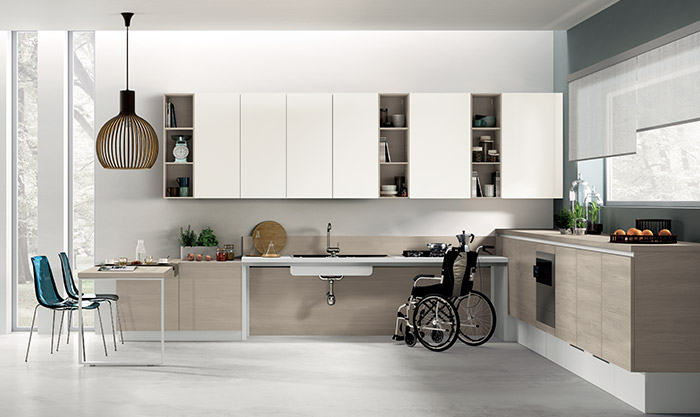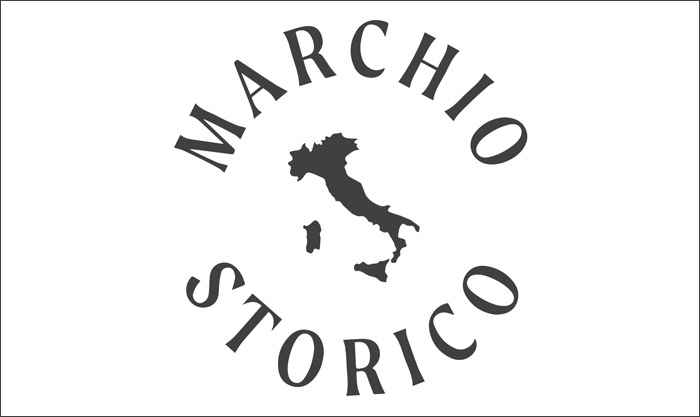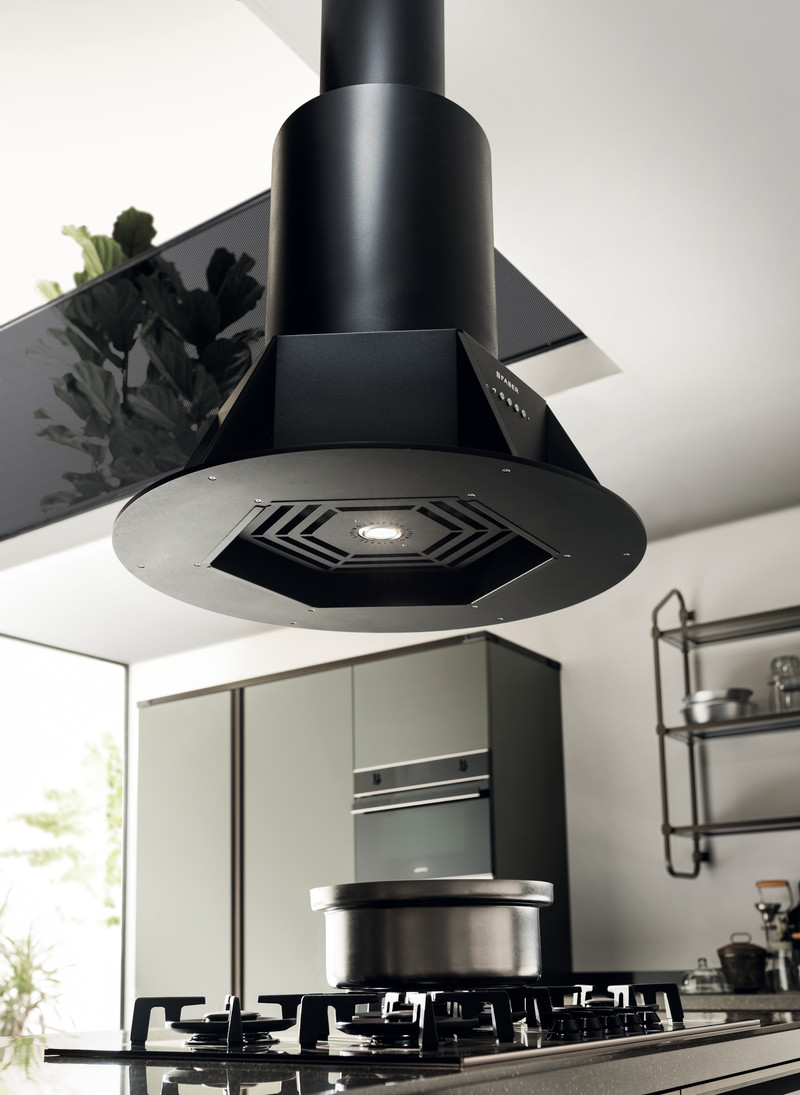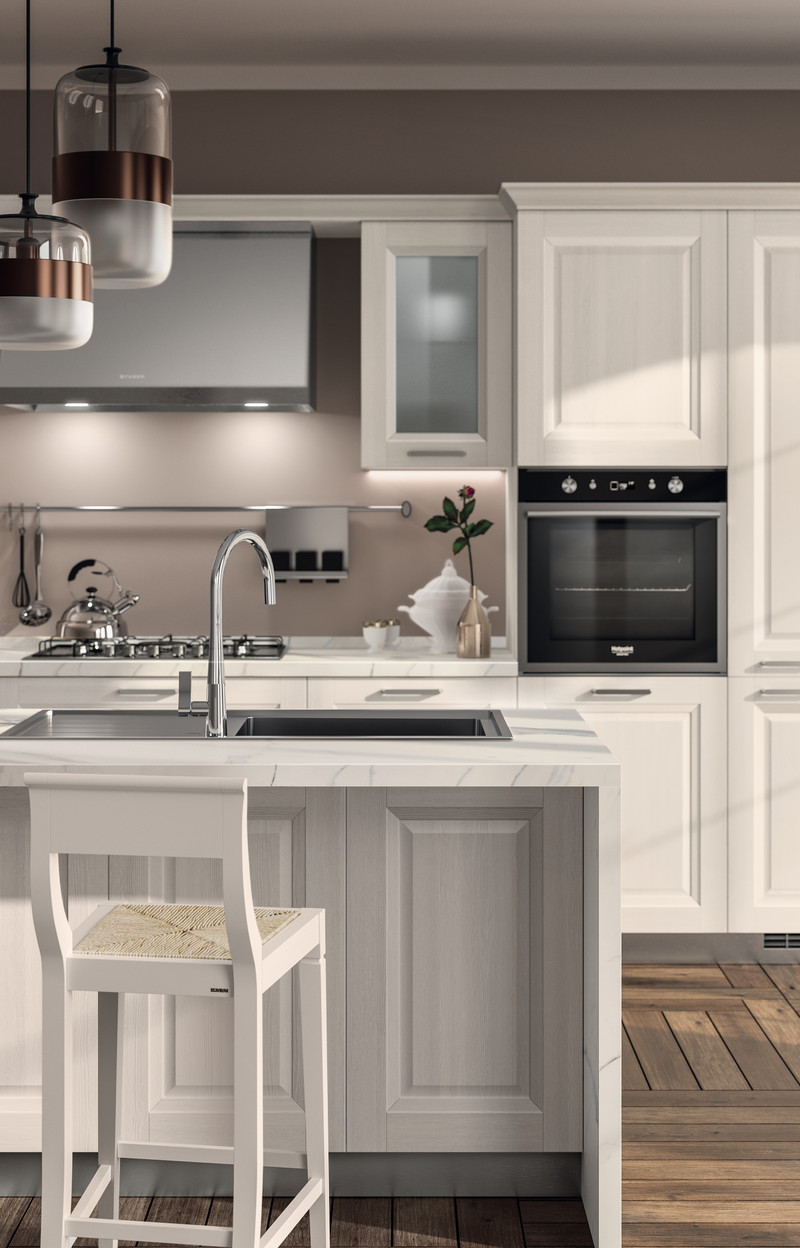State-of-the-art cooking appliances in our kitchens: a vast range of hobs and ovens (not to mention refrigerators, dishwashers and washing-machines) produced by the top manufacturers.
The very first type of modern cooker with hob and oven was the wood or charcoal-burning kitchen range. This was then replaced by gas or electric cookers, which again combined hob and oven in a single unit. Today, we have the option of separate hobs and ovens, built into the kitchen units, which allow us to make rational use of space and create a stylishly uniform, very practical combination within the kitchen.
Hobs vary depending on the number and type of burners or plates and their operating mode; they may be enamelled, steel or ceramic, with very efficient, safe rapid, semi-rapid or ultra-rapid burners designed to suit a wide assortment of cooking modes; they may have new-style pan-stands that ensure stable support and easy transfer of pans; they may be designed for corner installation, and feature griddles, fish burners, fryers, grills, ceramic plates or drip-catcher edges. Nowadays, ovens may have up to 8 cooking mode combinations and be fully programmed, self-cleaning and safe even for children to be around.




